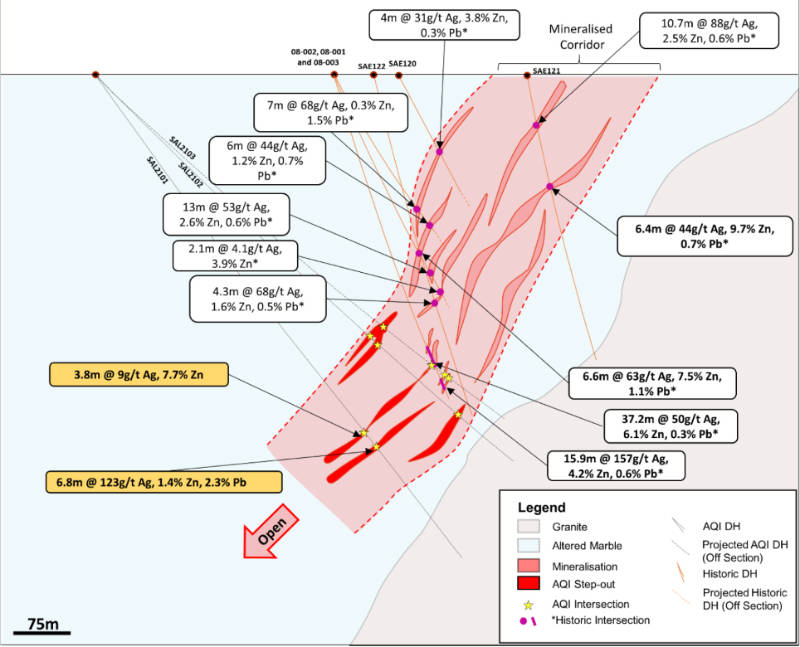Bonanza silver, zinc in Alicanto’s first hole at the Sala project
Mining
Mining
Exceptionally high grades of silver and zinc have been intersected in Alicanto’s maiden drill hole at its Sala silver-lead-zinc project in Sweden.
The hole returned an interval of 0.95m grading 348 grams per tonne (g/t) silver, 12.2% zinc and 5.9% lead from a depth of 592.58m within a broader zone of 6.8m at 123g/t silver, 2.3% lead and 1.4% zinc from 589.75m.
SAL21-01 also intersected a shallower intersection of 3.8m at 7.7% zinc and 9g/t silver from 572.75m.
Importantly, the mineralisation is adjacent to the historical Sala mine that produced over 200 million ounces of silver at an average grade of 1,244g/t.
Alicanto Minerals (ASX:AQI) adds that SAL21-01 represents a 140m step out and down-dip from historical drill intersections of 37.2m at 50g/t silver and 6.1% zinc and 15.9m at 157g/t silver and 4.2% zinc that includes high-grade intervals of 7.1m at 81g/t silver and 10.4% zinc and 0.8m at 1,034g/t silver and 1.5% zinc.
Visual observation of core from the second and third holes are also promising with the company saying they appear to have intersected a similar style and tenor of mineralisation as the first hole with multiple lenses of sulphide mineralisation.
“We could not have hoped for a better start to our drilling program. The grades are exceptional and support our belief that there is a lot more mineralisation to be found at Sala,” managing director Peter George said.
“The fact that this hole is 140m down-dip of the previous intersection and that the mineralisation remains open in every direction also supports our view.
“With the second and third holes showing very similar characteristics to this first hole, we are looking forward to more assays over coming weeks.”
The company’s 20,000m diamond drill program is continuing with two rigs operating on double shifts while assays are pending for SAL21-02 and SAL21-03.

The Sala system is interpreted to be a polymetallic skarn with geological similarities with major producing underground mines in the areas such as Boliden’s Garpenberg mine, which is just 50km to the northwest, and Lundin’s Zinkgruvan operation.
Highlighting the potential scale of mines in this area, Garpenberg has been operating continuously for over 64 years and has produced over 40 million tonnes of ore over that period.
Despite this, it still has a large resource of 151.5 million tonnes grading 2.75% zinc, 1.3% lead and 86.6g/t silver waiting to be mined.
With Sala remaining completely untested below 500m and open in all directions, it is not hard to see why Alicanto believes that its skarn system, as highlighted by high-grade intercepts next to the historical mine and lack of previous drilling, represents a significant opportunity to target continuations of known mineralisation.
Its first hole, which is a step-out from the Prince Lode where 12 holes were drilled during the 1980s and 2008 but were never followed up, has extended known mineralisation in the area to about 400m by 500m by 200m.
The two zones intersected in SAL21-01 represent two different styles of mineralisation with the shallower representing a zinc-rich lode characterised by semi-massive sphalerite veining while the deeper zone is characterised by a silver-lead dominant sulphide mineralisation.
This article was developed in collaboration with Alicanto Minerals, a Stockhead advertiser at the time of publishing.
This article does not constitute financial product advice. You should consider obtaining independent advice before making any financial decisions.